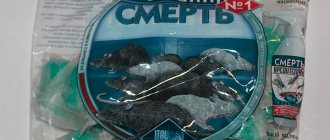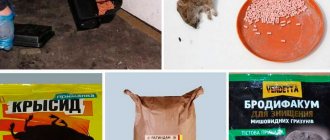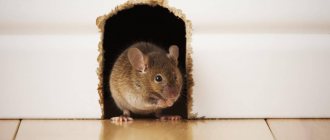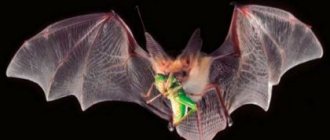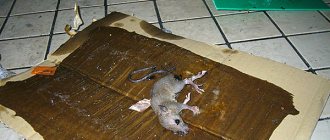How to get rid of mice: Pixabay How to get rid of mice? This question becomes relevant when a whole family of rodents settles in the house, capable of destroying food supplies and harming humans. If using poisons and calling special services is not part of your plans, try folk remedies for mice.
Why do mice appear in the house?
Mice poison the lives of the inhabitants of the house. When gray thieves first appear, it is necessary to take urgent measures to remove mice from the house before the number in the room increases. Long-tailed pests appear both in private homes and in multi-storey buildings.
The following factors increase the likelihood of a rodent infestation:
- Cluttered basements and old collapsed outbuildings are places where mice accumulate. The animals establish uninhabited territories and live there in large families.
- Rubbish heaps and uncollected landfills provide feeding grounds for rats and mice. When piles of garbage rise near residential buildings, rodents run to the warm, cozy walls of a residential building.
- Grocery stores are a tempting bait for gray animals. Cheeses, sausages and cereals attract mice to settle in secluded corners of retail premises. Rodents get into residential apartments if the premises are located on top or to the side of a shopping center.
- Pests can enter your home through transportation. For example, when receiving a set of new furniture. Mice hide in cardboard packaging and crawl out when assembling parts.
- Violation of sanitary standards leads to the appearance of mice. Scraps left on the table or garbage not taken out emit an odor that attracts rodents.
Interesting! Once in residential buildings, mice feed on any food that they come across on the way. Mice chew matches, soap, candles... along with food.
The main reasons for the appearance of mice in homes and how to get them out read more in the article here.
Mousetraps
This method can also be considered relatively inexpensive and effective, but you should not use such a banal product as cheese as bait. Instead, take a small piece of lard, sausage or regular white bread.
Of course, a mousetrap has both pros and cons. Among the advantages, we note compactness, small size and ease of use. The disadvantages include the fact that this method cannot be called humane (the mouse will still suffer before death), in addition, only one individual is allowed to be caught with bait at a time.
How to catch a mouse in an apartment without a mousetrap? If you value the life of the little gray pest, then make your own, non-lethal trap.
You will need a liter jar (glass), on the wall of which, closer to the bottom, you should glue a piece of bait. The jar is turned upside down and placed on the floor so that one edge of the jar is raised (this can be done with a coin).
As soon as the rodent begins to reach for the treat, your simple trap will wobble and eventually slam shut.
The trapped animal can then, with a clear conscience, be released in some field or other place, away from residential buildings.
How to determine the presence of rodents
It is easy to determine that mice have appeared in your home. Signs of mice appearing look like this:
- rustling in furniture at night;
- an unpleasant specific mouse smell that comes from places where pests are frequented;
- spoiled bags of cereals, grains and seeds appear;
- bitten wiring, items of clothing, furniture;
- you can see paw prints;
- mouse droppings.
An increasing number of mice enhances the listed signs. Rodents rarely hide from people and can appear during the daytime. Mice are not as dangerous as rats, but their appearance nevertheless requires urgent intervention.
Ultrasound
For our convenience, manufacturers have long come up with special devices, ultrasonic repellers, which help, as the name implies, to repel mice.
The operating principle of this device is as follows: the device emits ultrasonic waves, and they spread throughout the apartment, but only mice hear these waves. Manufacturers are sure that the sound that rodents hear is so terrible and painful for them that they try to quickly escape from the house.
However, in addition to mice, these same sounds can also be perceived by your small pets (hamsters, pet rats, guinea pigs), therefore, it is better not to use ultrasound in an apartment where such pets live.
What danger do they pose?
A mouse infestation in itself is a nuisance. These are small, dirty, unpleasant creatures that brazenly invade pantries and nightstands for food. Rodents cause harm not only to food, furniture and the integrity of walls, they pose a danger to human health:
- In some people, products used by mice cause an allergic reaction.
- Close proximity to pests carries the risk of infection with infectious diseases. Mice are carriers of bacteria and germs.
- Gray rodents damage wiring and cable communications, resulting in a short circuit in the network.
- Causative agents of dangerous infections live in the saliva and droppings of pests. With the appearance of mice, fleas enter the room, living in the short fur of basement rodents.
- Mice spoil food products: they “drill” holes in bags of flour and cereals, eat through packages of pasta, grind seeds, crackers, and bread. Rodents do not disdain vegetables, leaving teeth marks on potatoes, carrots, and cabbage.
After death, the corpses of mice must be removed as quickly as possible, since the cadaverous smell of rodents is toxic to people and can cause severe headaches or poisoning.
When uninvited guests enter residential premises, they damage furniture, books and other products. They make nests in the far corners of pantries, dragging small wardrobe items. Rodents damage shoes, clothes, wallpaper and, among other things, spread a disgusting smell.
We use metal mesh
According to biologists, a mouse is able to penetrate even into a hole that a pencil cannot fit into. And it is true. The skeleton of these rodents is very flexible, and the skull is capable of folding. Therefore, the galvanized mesh, which is used to protect the house from mice, must have the smallest cells. In addition, the mesh must be made of very durable material.
Important! I advise you to use a mesh made of wire more than 2 mm thick. In this case, the cell dimensions should not be more than 10x10 mm.
The mesh should be laid on the subfloor.
Laying fine mesh
The foundation is wrapped using a mesh.
Foundation protection with mesh
Or the ventilation holes are closed.
Closing the vents
All corners are covered with fine mesh (it will serve as reinforcement for the plaster), and it is important not to miss a single joint or corner.
You can't miss anything
In addition, such a mesh can be buried around the perimeter of the foundation (depth - at least 80 cm), so that rodents cannot dig under it. In short, it is better to lay fine mesh in all places where rodents can theoretically sneak through.
The base can be sheathed with a mesh to a height of at least 100 cm. And to further protect the base, it can be sheathed to the same height:
- smooth plastic (it should be slippery);
- profile sheet made of structural steel (recommended thickness - 1.5 mm, should be laid lengthwise in waves);
- plaster (acrylic putty is applied on top of the plaster to prevent mice from chewing through it, and only then slippery paint is applied).
The mesh will help protect your home from rodents
How to repel pests
Mice multiply quickly and if the owner of the house shows indifference to the first signs of the appearance of pests, a whole flock will soon breed in his apartment. The presence of long-tailed rodents requires immediate measures to eliminate them.
A simple repellent method to get rid of mice is to get a standing cat. It is desirable that the person from the feline family is not purebred and has good hunting skills. The age of the animal does not matter. Kittens catch mice no worse than adult cats.
Prevention
It is much more effective not to remove pests, but to take preventive measures that will help get rid of their occurrence.
To do this, it is recommended to adhere to the following simple rules:
- The trash bin should never be overfilled. If it is filling slowly, you do not need to wait until it is completely filled in order to take it out.
- After eating food or finishing the cooking process, it is necessary to carry out additional cleaning to remove all crumbs and other small debris that could attract mouse attention.
- Place mousetraps in the kitchen, attic, basement , closets and cellars, since this is the simplest method of preventive control, which, if not, will not exterminate the pests that accidentally get into these places.
- Do not store food in places easily accessible to rodents.
Methods of disposal
Mice scare family members, spoil food, and spread unpleasant odors and bacteria around. It is necessary to get rid of them before the fertile parasites give birth to offspring.
There are several effective methods for dealing with uninvited guests. The most commonly used methods are:
- poison mixed into food;
- getting a hunter cat;
- traps and mousetraps;
- repellents.
The use of mousetraps and poisonous substances is prohibited if you have a pet cat. If a pet catches a mouse and eats it, it can become poisoned. Rodent traps can cause physical harm to a pet.
Physical destruction
You should start the fight against mice with a thorough cleaning of the room and organizing the room to destroy the nasty scourge. First of all, it is necessary to seal the cracks in the baseboards and walls to prevent other creatures from appearing.
The physical method of destruction includes placing traps and mousetraps indoors.
A mousetrap is installed in places where rodents frequent: under washbasins, near food cabinets, under a bench. Bait in the form of a piece of cheese or lard is placed in it. The animal will come running to the smell, try to remove it from the hook, touches the spring, and the device destroys the pest with a blow.
Instead of mousetraps, they use other types of traps. You can make it yourself. For example, cut off the top of a plastic bottle. The inner walls of the container are lubricated with some liquid oil. Delicious food for mice is placed at the bottom of the bottle. The top of the bottle is secured with tape to the bottle. The container is attached to the table. The pest will smell the bait, climb inside for prey, but will not be able to get out. In another embodiment, the bottle is hung on a string from the table. The mouse falls into a plastic container and tries to climb out, but thanks to the slippery inner surface, it will fail. A harmful rodent falls into a trap.
Note! Mice have a big sweet tooth. They are subservient to sugar and chocolate, and are more drawn to sweet treats than to cheese and lard.
Home Remedies
Using a bucket, you create a high-quality trap for rodents. A sheet of newspaper with a cut in the form of a plus sign is attached to the top. Place a piece of cheese, sausage or lard on the paper. Water is poured inside the bucket. The animal hunts for bait and falls into a hole. To prevent the mouse from getting out of the trap, you need to use a tall bucket and lubricate the walls of the container with a slippery substance. If you don’t pour water, the mouse will flounder around in the bucket and won’t be able to get out. This method helps to catch all house mice.
At home, products are made to repel and eliminate rodents. There are several simple and accessible methods:
- Plates with vinegar essence are placed in the rooms. Long-tailed parasites cannot tolerate strong odors and will leave the room.
- Naphthalene is mixed with bulk ingredients: sawdust, peat. The mass is laid out on pieces of cardboard and distributed throughout the room. The aroma is disgusting to mice.
- Bouquets of wormwood and ash are scattered in pantries and closets.
Traditional methods
Traditional methods help in the fight against mice. Some herbs are widely used to drive away mice. Proven recipes have been used for years and have gained great popularity:
- Small bags are filled with a collection of dry herbs: mint, chamomile, and hidden among the products. The folk recipe is not harmful to people and pets, but has a negative effect on rodents.
- Mice cannot stand the smell of onions. Cut onions are laid out in large quantities throughout the room.
- Bay leaves cause discomfort to mice's sense of smell. It is recommended to scatter them among cereals and vegetables.
- Dilute a few drops of essential oils with water and wipe the interior and exterior surfaces of the furniture.
- Gypsum is mixed with flour, and the resulting balls are placed in the habitats of the parasites. The mice eat the “treat” and subsequently die.
- Ash is sown among baseboards and walls. The substance corrodes the paws of mice, and they leave the inhospitable house.
Humane ways
The compassionate owners of the apartment refuse to destroy the rodents, but they also do not want to put up with their presence. They get a cat that, without human intervention, “brings out” mice or, with one meow, drives rodents away from the house. Catching mice yourself will help free your home from the scourge without killing the rodents. To do this, place bowls with cheese or peanut butter in the corners of the room, wait for the mouse to appear, and throw a towel over the animal. You must act quickly so that the mouse does not have time to escape.
Ultrasonic devices that repel mice are considered a humane method of rodent control. You can find repellers on the market:
- ultrasonic;
- electromagnetic;
- mixed.
They all cause panic attacks in animals and cause them to flee the premises.
Electromagnetic waves paralyze the nervous system of rodents, remaining a safe device for humans.
Professional help
Professionals can quickly and effectively remove mice from your premises. Rodent pest control specialists will correct the situation in a short time. The appearance of mice will be quickly eliminated.
Professionals perform the work in three steps:
- Assess the degree of infestation at home and determine tactics for exterminating mice.
- Deratization is carried out.
- The results are secured with preventive measures. A check is arranged a month after the procedure.
Before this, you need to prepare the room: do a general cleaning, create open access to the walls and baseboards, remove unnecessary items. The only drawback of professional help is the high cost of the service.
Peppermint essential oil will make tailed parasites leave your home
Reliable and humane, if you exclude direct contact with rodent fur, a remedy that will force uninvited guests to leave your home.
Peppermint essential oil can be used in several ways, for example, adding a few drops to the water for washing floors - the main thing here is not to overdo it, otherwise the strong smell will cause a headache. You can moisten napkins with oil and put them in jars that need to be placed in the basement, cellar or barn.
A solution containing mint essential oil, water and alcohol works well against rodents.
To prepare it you will need: 300 ml of water, 10-15 drops of mint essential oil, 10 ml of alcohol.
Using a spray bottle, it is necessary to treat all cracks, floors and other hard-to-reach places where rodents may be located.
Organic repellents
Many manufacturers of organic products used in agriculture offer a wide range of rodent repellents. These products are less harmful to nature and humans compared to pesticides. Repellents contain natural substances, such as peppermint, that force pests to find a new home. Such organic preparations are available in aerosol form and are sold in stores selling home and garden products.
Using an ultrasonic device in rodent control
The most effective and harmless way to control pests today is ultrasound . Modern devices operate from an electrical network, emitting subtle signals that are not felt by humans. But they are not tolerated by mice at all and force them to leave their habitat.
Most ultrasonic devices operate in an area of up to 200 square meters. meters, so one such device will be enough to protect an entire apartment. According to customer reviews, pests can be eliminated within a week. They do not appear again for a long time.
The versatility of the Hawk repellers
Hawk repellers are used both at home and for agricultural purposes. Advanced models are even allowed to be placed outside buildings.
Where can it be used
Repellers are used in residential buildings: apartments, houses, country cottages, etc. They are placed in holiday homes and tourist centers to protect visitors from rodents.
The beeping of the device causes severe emotional stress in rats.
The devices can be used in domestic premises: garages, storerooms, basements. They are required to protect granaries, production and warehouse buildings.
Due to the absence of harmful effects on human health and the large covered area, there are no restrictions on the use of Yastreb repellers. Some models are waterproof.
Prevention of re-breeding of rodents
To prevent the recurrence of rats, you need to do the following:
- Look around the room. Cover all holes and cracks with a mixture of concrete and broken glass. This will prevent animals from chewing their way through.
- Remove food from open access and clean regularly. Pests will have nothing to eat; they will not have material to build nests and shelters.
- Cover the ventilation shafts with fine mesh wire mesh. It is better to secure it with screws or screws. This will allow you to quickly remove or replace the mesh if necessary.
- Do not leave garbage near the doors to your apartment or house, or near the garbage chute.
- Lower the toilet lid. Rodents are good swimmers, so they move freely through risers and sewers.
- Place mosquito nets on the windows. It is advisable to close them when you leave home. Rats are able to climb trees and jump into houses. They can easily chew through the mesh while you are away. If you are at home, you will hear the noise and be able to react quickly.
To prevent rats from getting in, you need to throw out trash regularly.
It is recommended to use ultrasonic repellers for prevention. If they are turned on constantly, rats will not have the desire to move into your home.

